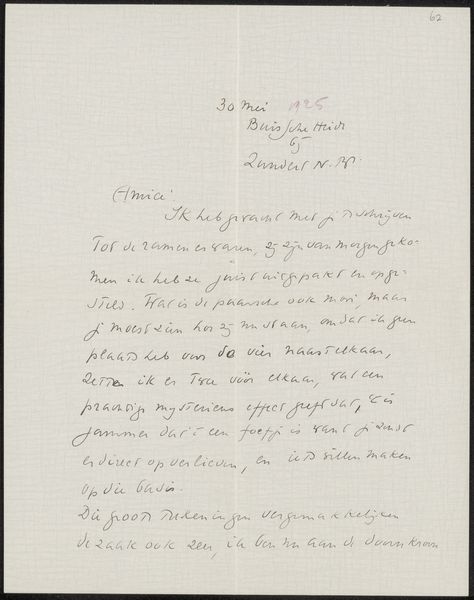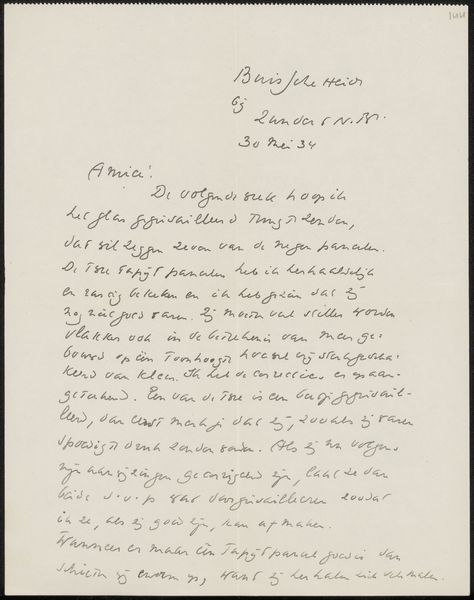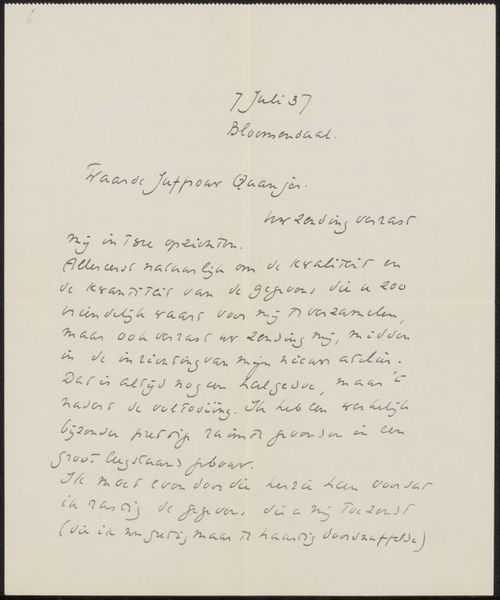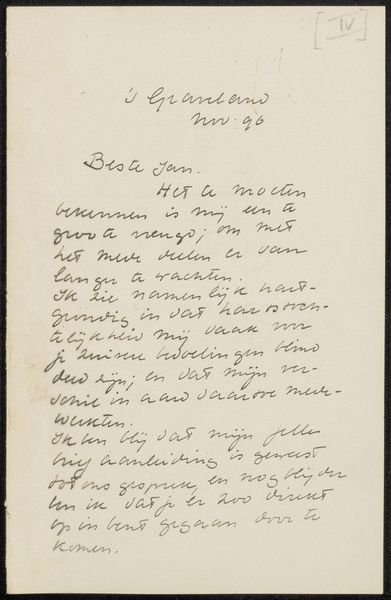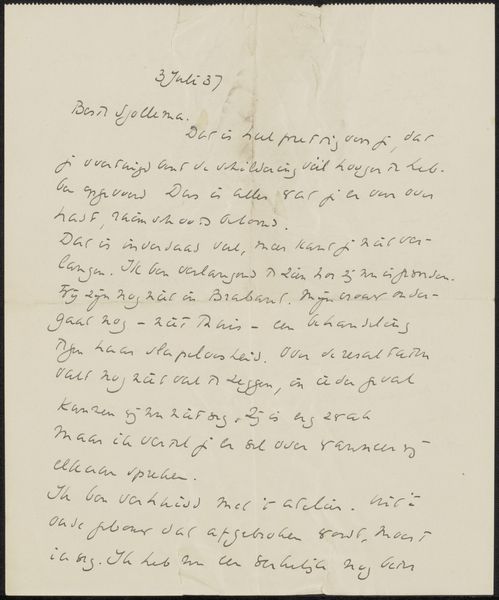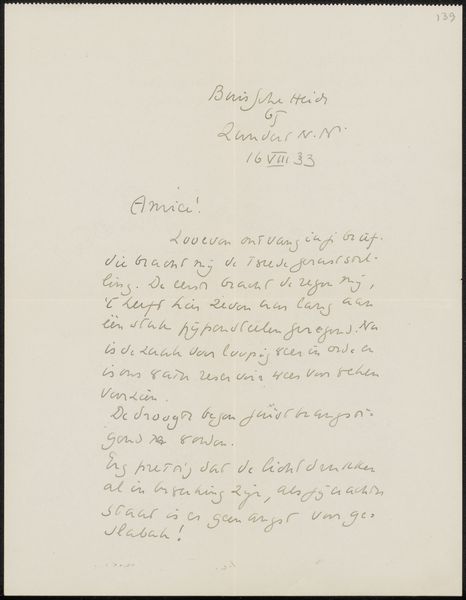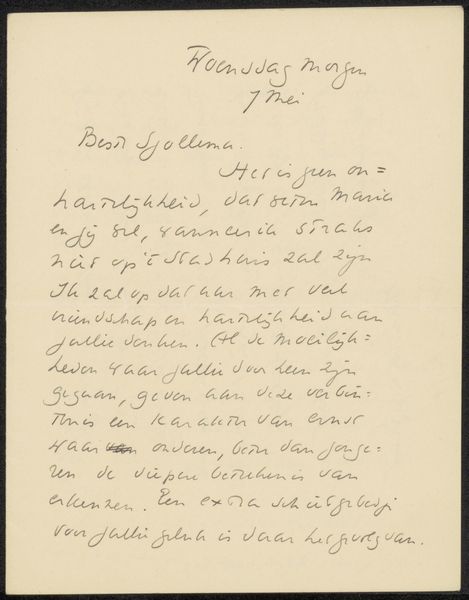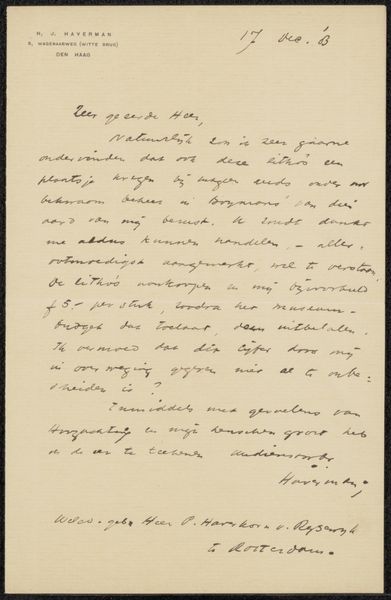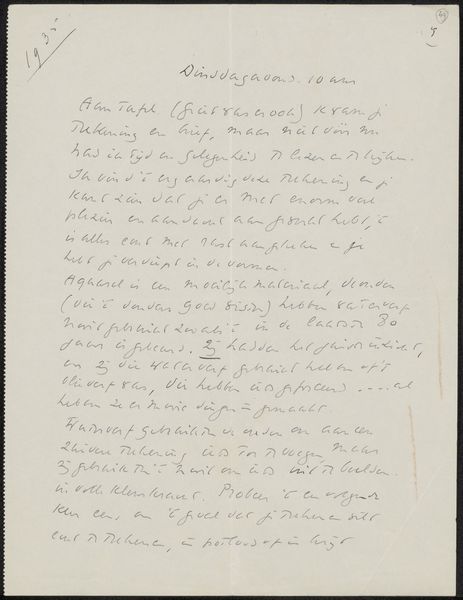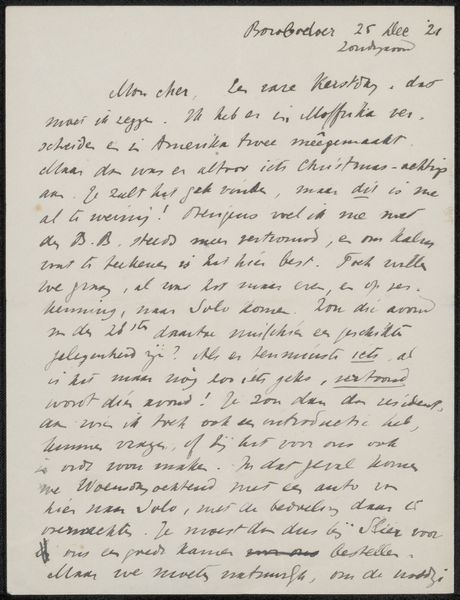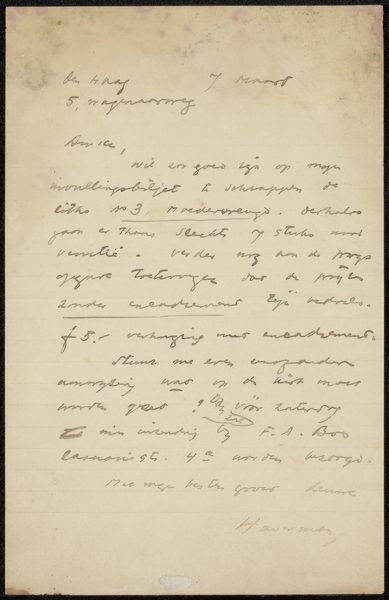
drawing, paper, ink
#
drawing
#
paper
#
ink
#
modernism
#
calligraphy
Copyright: Rijks Museum: Open Domain
Curator: I find this intimate and fragile. It’s "Brief aan Joop Sjollema," or "Letter to Joop Sjollema," created possibly between 1930 and 1932 by Richard Nicolaüs Roland Holst. It’s currently housed in the Rijksmuseum. Editor: The texture of the paper is what strikes me first—the way the ink bleeds ever so slightly into it, creating a blurred effect. You can almost feel the paper’s grain and its absorbent qualities. It makes you wonder about the availability and type of paper used then, right? Curator: Indeed, and the cursive script, it flows like water yet holds the weight of emotion. It reads like a personal missive, rich with private meaning but visually accessible even if you can’t decipher the words. Roland Holst used ink on paper, embracing calligraphy as an art form in itself. We see here the meeting point of personal communication and artistry. Editor: Let's think about that 'meeting point,' because clearly calligraphy can signify different social functions: from utilitarian notes, which are throwaway documents, to fine art that will enter a museum setting. How does this end up in the Rijksmuseum? What are its material traces through time? Is this just a precious medium from our perspective? Curator: The choice of calligraphy elevates this letter beyond a mere message, but imbued with emotional expression. In its time period, calligraphy harkens to traditions of handcrafted expertise and literary expression. It suggests a deep connection between handwriting and the self. This is, in the language of modernism, the embrace of the self in art. Editor: Perhaps its integration into a museum collection highlights an undervaluing of everyday experience. A letter typically enters into the archives and papers of Sjollema himself; maybe it only finds its way into a gallery once its contents can resonate with cultural figures that were already well-known to later audiences? Curator: You make me rethink our modern need for artifacts to communicate an image about a bygone period and culture. We want relics to ground us when that feeling of material absence becomes overwhelming. Editor: A fascinating reflection on Roland Holst's artistic intentions and legacy. Curator: Absolutely, this dialogue really elucidated how much context informs the work, even something as seemingly simple as a letter.
Comments
No comments
Be the first to comment and join the conversation on the ultimate creative platform.
